In the New York Times today, Lizabeth Cohen tells us once again that America has a housing crisis:
Only Washington Can Solve the Nation’s Housing Crisis
In recent months America’s affordable housing crisis, a long-simmering issue for people of low and moderate incomes, has burst onto the front page. Rents are rising much faster than income, while the median home price in some 200 cities is $1 million….The private market is clearly failing. Although many city and state governments are motivated to take action, they have limited tools at their disposal….At its root, the crisis is a supply problem. Between 2011 and 2017, the country lost four million low-rent apartments. This has driven up demand for what remains, with the predictable result that a third of all households spend more than 30 percent of income for shelter. In many prospering cities, large numbers pay more than 50 percent.
I feel like this stuff is manufactured in an underground factory somewhere and shipped out randomly to newspapers across the country. Does anybody even bother to compare it to the facts anymore? Let’s start with the claim that “rents are rising much faster than income.” Is that true?
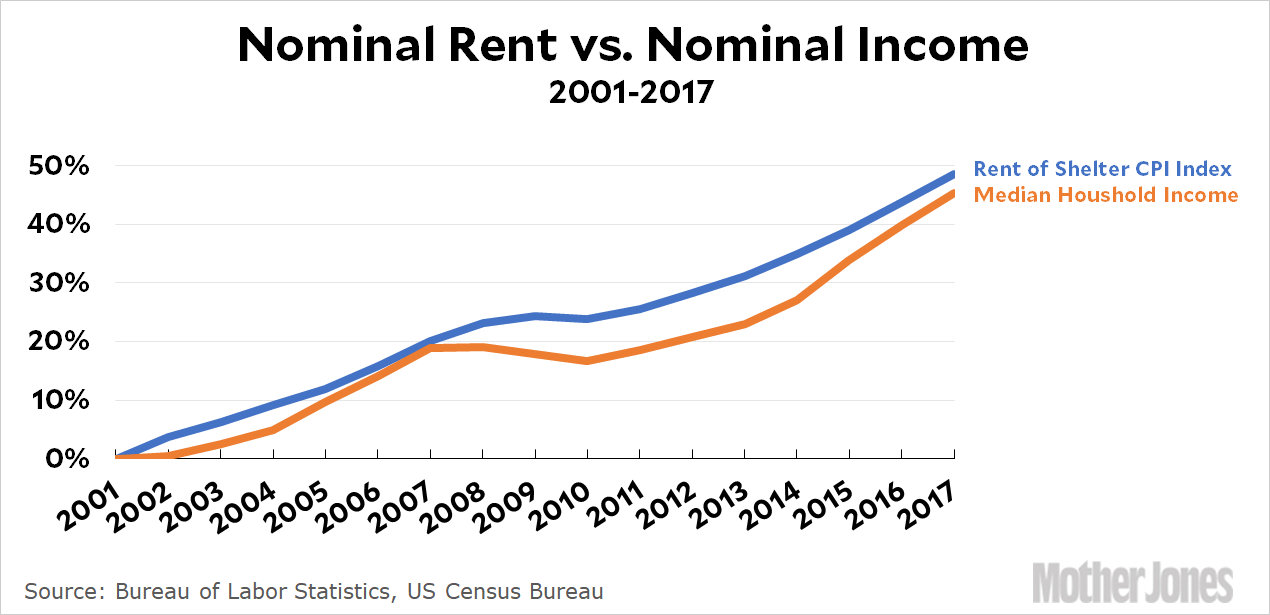
Nope, this isn’t true. Rent has risen only slightly more than income since 2001, and has risen more slowly than income since 2010. Next up is “median home price in some 200 cities is $1 million.”
That’s true, but pretty meaningless. Click the link and the first example is Biltmore Forest, North Carolina. This is a tiny enclave of 1,300 on the outskirts of Asheville that’s built around the old Biltmore Estate and the Biltmore Forest Country Club. It’s millionaire country, just like most of the other cities on the list. In fact, a full quarter of them are just subdivisions of a single metro area: San Francisco and Santa Clara. Most of us would call that one place, not 46.
And needless to say, that $1 million figure hasn’t been adjusted for inflation over the years. It never is when someone wants a scary headline.
Next up is “the crisis is a supply problem.” Is it?
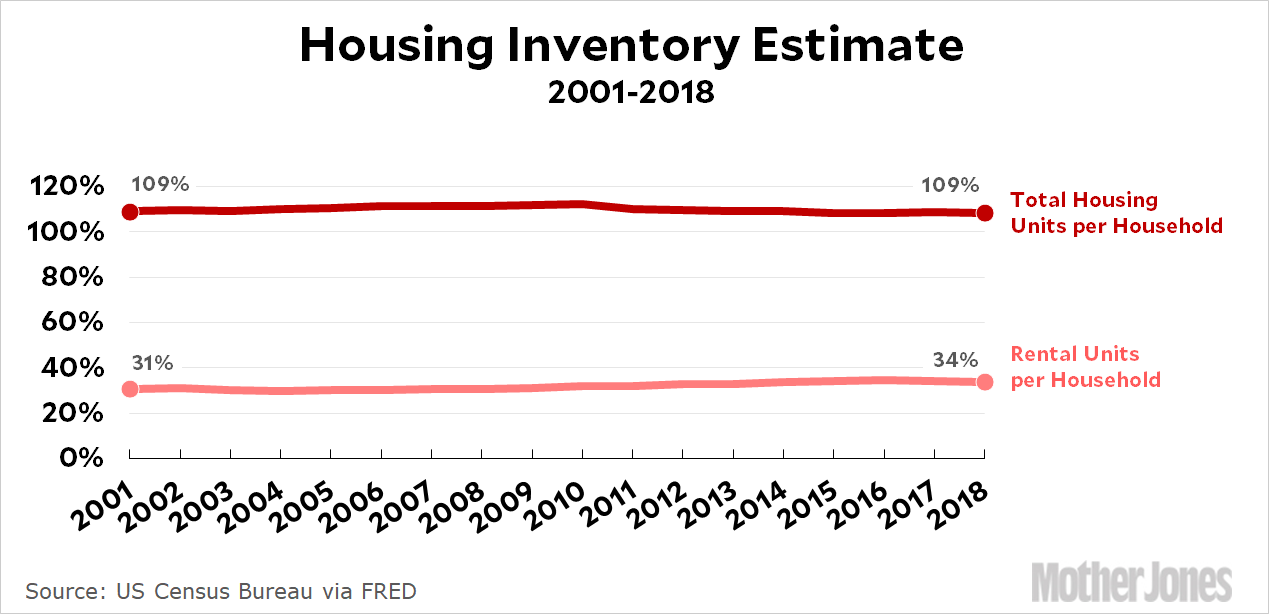
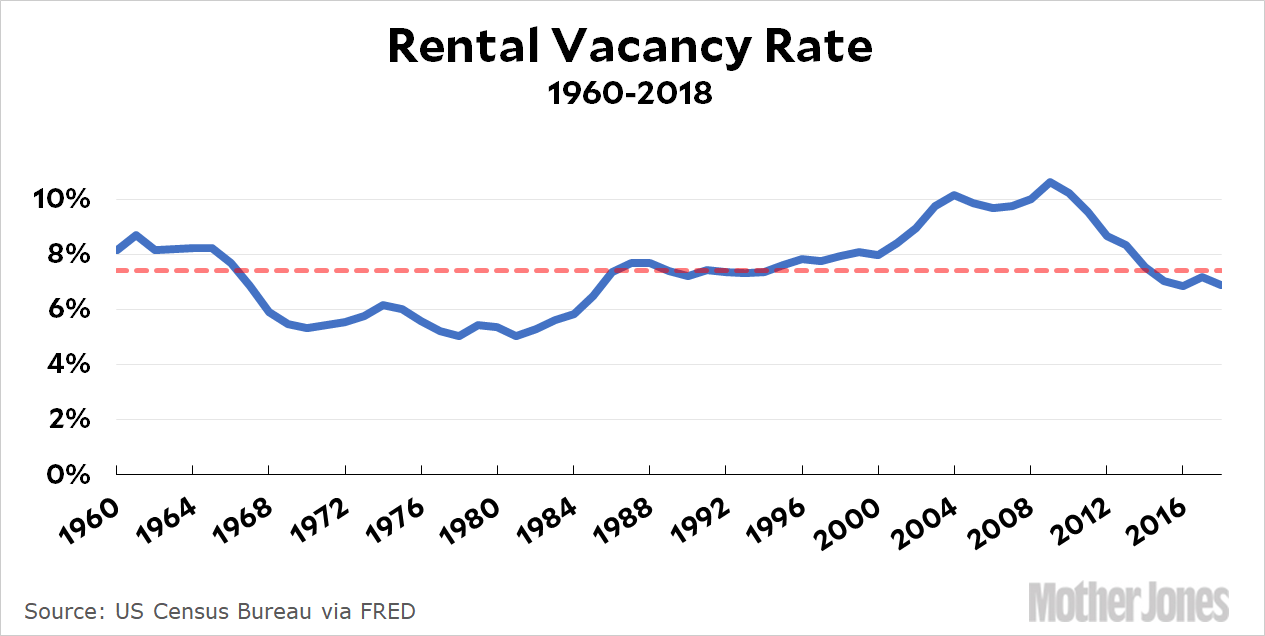
As of 2018, there were a total of 138 million housing units for 128 million households. That’s 9% more housing units than households, the same as in 2001. The number of rental units per household has gone up. And the rental vacancy rate is right at its long term average.
Nor has the nation “lost” 4 million low-rent apartments. What that probably means (though there’s no telling, really) is that 4 million apartments have crossed some arbitrary threshold defined as low-rent. But if you adjust for inflation, probably nothing much has happened at all. Those apartments are still around and still cost about the same as ever.
Next up is “a third of all households spend more than 30 percent of income for shelter”:
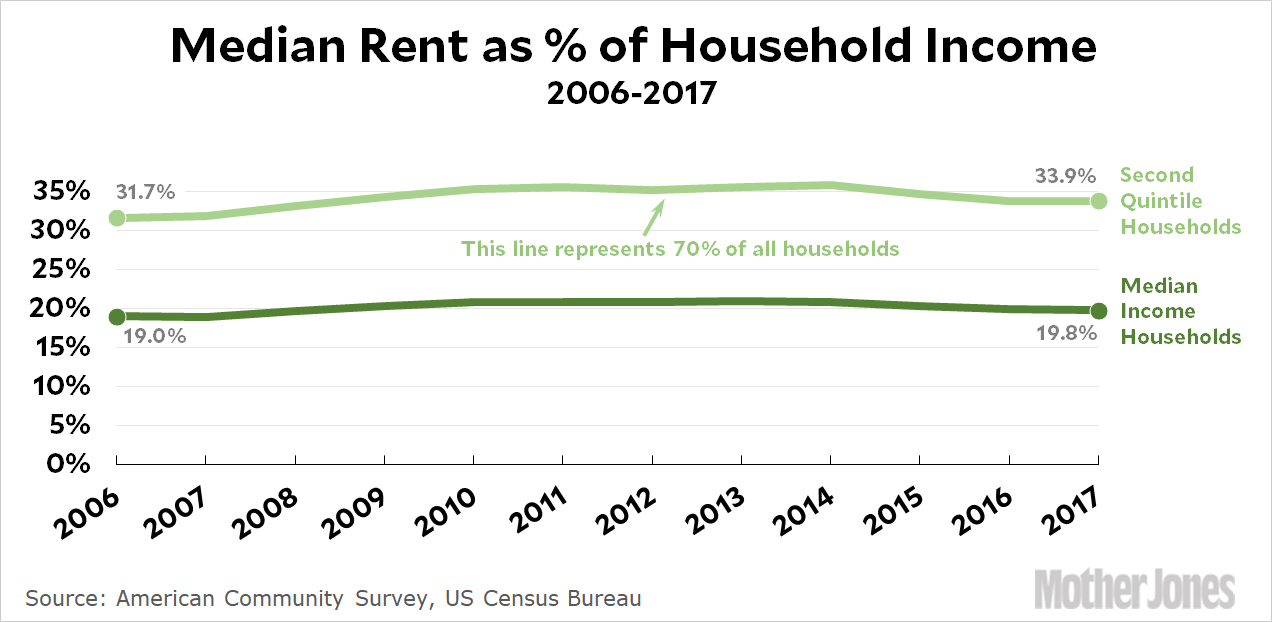
The median household pays about 20 percent of their income in rent and that hasn’t changed over the past decade. If you go all the way down to the average of the second income quintile—which is about a third of the way from the bottom—average rent has gone up slightly, from 32 percent of income to 34 percent. But that’s using the median rent. People at that income level mostly pay less than the median, which means that their rent is probably around 25-30 percent of their income.
That accounts for 70 percent of all households. Some of the rest probably do pay more than 30 percent of their income in rent, but not all of them. The real number is most likely a quarter of households or less. And more to the point, it hasn’t changed other than slightly over the past decade. Just for comparison, here are average mortgage payments for homes sold over the past two decades:
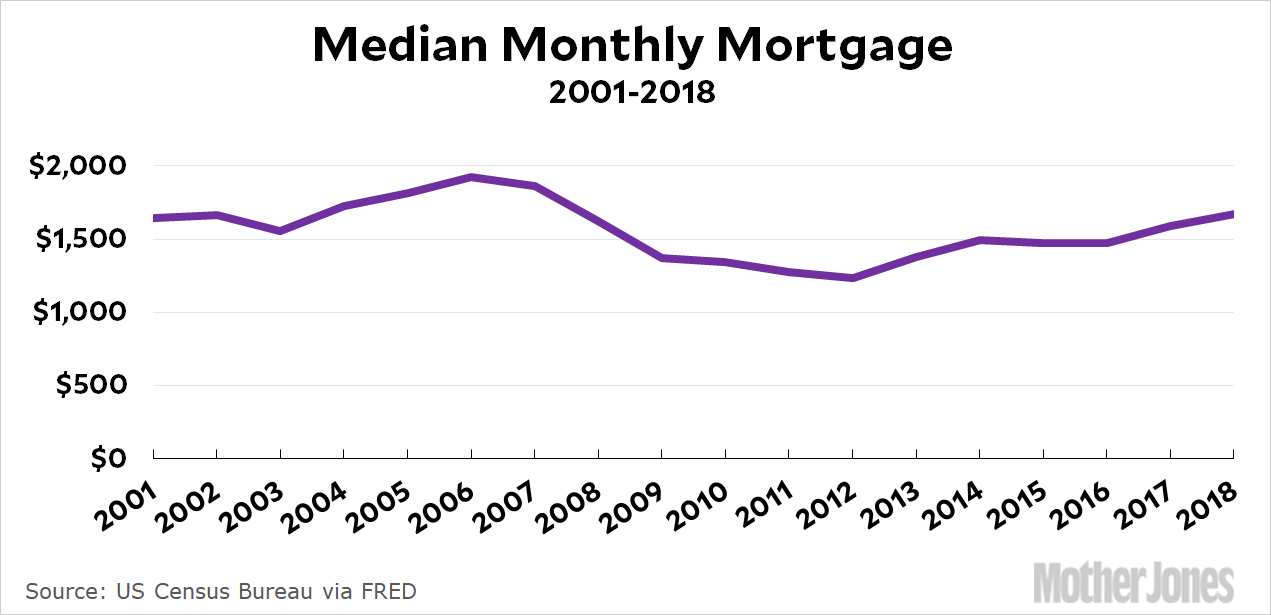
There’s no change here either, and since rents and mortgages usually move together, it’s not surprising that rents haven’t increased significantly in recent years.
In other words, virtually nothing in the setup for this op-ed is true. Rents aren’t out of control; housing inventory isn’t low; and rent as a percentage of income is about the same as it was ten years ago. There is no generalized “rent crisis” in America.
Now, there’s no question that a few specific cities have seen big rises. The Bay Area is obviously one, Denver is one, and Seattle is another—though the market has responded recently in Seattle and housing development is now increasing. But if you look at big cities more broadly, there’s not even a generalized urban rent crisis.
I would be delighted to improve housing assistance to the poor, who certainly do pay a large percent of their income in rent. The waiting list for Section 8 housing vouchers, for example, is years-long in most cities, and god knows we should make this program more generous. But can we please stop inventing a “housing crisis” to justify it?
POSTSCRIPT: One thing worth pointing out is that it’s just about impossible to get reliable statistics that compare incomes of the poor to average rents of the poor. There’s no question that the poor pay a lot for housing in big cities, but it’s hard to say if that’s gotten significantly worse over the past few decades. It’s also hard to say just how much the average poor household pays.

















